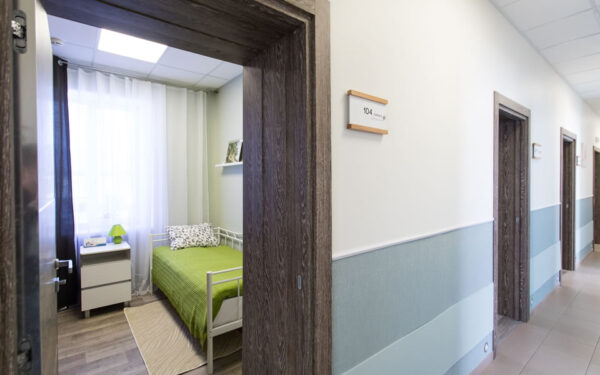The Final Skilled Nursing PPS Rule FY 2018
By Marilyn Mines, Senior Manager, Advisory Services

The Center for Medicaid and Medicare Services (“CMS”) recently released the final Nursing Home Prospective Payment System (“PPS”) decisions described in the published FY2018 Final Rule. Many of the changes previously listed in the proposed rule have not changed. The following is intended to highlight and summarize important elements outlined in the final rule.
Medicare Rates
Although the proposed rule was expected to increase Medicare rates by $390 million, the actual for FY2018 will be $370 million, a 1% market-basket increase over FY2017.
Value Based Purchasing
Several bills such as the Affordable Care Act (“ACA”) and the Protecting Access to Medicare Act (“PAMA”) in recent years contain verbiage requiring the development and implementation of a value-based program: Value Based Payment (“VBP”) is a mechanism by which Medicare payment to the skilled nursing facility (“SNF”) is related to the quality of care being delivered to residents rather than the volume of services provided. This initiative applies to Medicare Fee for Service beneficiaries only.
Basically, legislation was mandated to establish a VBP incentive-based payment program, to become effective on/after October 1, 2018. The FY2018 final rule not only established and explained this process for this year, but also projected the measures which would be utilized in the next two years as well.
The program requires performance standards be developed for each fiscal year; these standards will utilize the results of an achievement and improvement score, the higher of which will be used to calculate the performance score. The performance scores will be ranked from high to low, and the return of withheld dollars, if a facility is entitled, will be based on the ranking.
The performance standards are to be announced at least 60 days prior to the beginning of the performance period for the fiscal year. Although quarterly confidential reports have been available for review since October 1, 2016, the Final Prospective Payment System (“PPS”) Rule has explained the importance and review of these reports by the provider is essential to ensure accurate information is made public, effective October 1, 2017.
Here is a brief summary of how the VBP program works:
- Beginning October 1, 2018, all Medicare rates will be cut by 2%.
- This 2% will fund the Value Based Incentive Payment (VBIP) pool.
- Sixty percent of the pool will be paid back to the SNFs (per FY); the remaining 40% will go into the Medicare trust fund.
- Not every SNF will be paid back the 2% cut; monies must be earned. Those providers ranked in the top 60%, based on a calculation considering the achievement scores and improvement scores for each year, will receive some payback, while those in the lower 40% may get some reimbursement, but not as much as they would if the program didn’t exist. In other words, if this program were not initiated, the facility would retain more money than it may now receive.
- The ranking will be based on the SNF’s All-Cause Readmission Measure (“SNFRM”).
For a provider to ensure the information used by CMS is correct, confidential reports will be posted quarterly review. This quarterly information is obtained from hospital claims, which may not necessarily be correct. If the provider can prove the information to be wrong, CMS will change the report. Therefore, it is essential the provider review this information for accuracy. Such information is posted and available 60 days prior to the payment adjustment period from Welcome to the CMS System for Providers website via www.qtso.com and by accessing your CMSNet page. The provider will have 30 days to respond to CMS. If the provider submits information to validate the errors, CMS will change the data that will be published.
Readmission hospital rates have been calculated based on the calendar year. Effective October 1, 2017, hospital readmission rates will be switched to the fiscal year. That being said, there will be an overlapping of the last quarter of 2017. Therefore, for the calculation of the all-cause SNFRM, the actual rate will be based either on the improvement rate of the provider between 2015 and 2017 or the rate in 2017, whichever is better. Collection of data for calendar year 2017 will be used for this year; the first quarter of fiscal year 2018 will be used for calculating the FY2019.
The SNFRM is risk-adjusted and does have some exclusions. The lower the rate, the better the measure. Be aware when talking about the SNFRM, there are several programs which mention readmission rates, each of which has a different definition. For the VBP, CMS is looking at all re-admissions within 30 days from hospital discharge that will affect future Medicare rates.
There are several measures providers can take to help keep their readmission hospitalization rates down. Such programs include but are not necessarily limited to the following:
- Track facility discharges.
- Utilize various tools to assist staff in accurately reporting residents’ change of condition to the physician or non-physician practitioner.
- Reinforce with staff what skilled services are available within the facility to remind practitioners when reporting a change of condition.
- Educate staff on early signs of potential changes that might require interventions; the earlier a situation is identified, the quicker that action can be taken.
Quality Reporting Program
The SNF Quality Reporting Program (“QRP”) was implemented with The IMPACT Act of 2014. This act mandated the collection of data regarding falls, pressure ulcers, and admission/discharge functional assessment, and care planning was collected between October 1 and December 31, 2016, to be reported and used for payment in FY2018. Starting with FY2018 and each subsequent year thereafter, 2% of the market basket will be withheld for noncompliance; this is in addition to the 2% withheld for VBP. In this instance, compliance is defined as data being included on at least 80% of the minimum data sets (“MDS”) submitted for residents admitted on/after October 1, 2016, and discharged within the quarter.
There are six measures finalized in the FY2016 final rule affecting the FY 2018 payment:
- Application of percentage of residents experiencing one or more falls with major injury.
- Percentage of residents with pressure ulcers, new or worsened.
- Application of percentage of long-term care hospital (LTCH) patients with an admission and discharge functional assessment and care plan that addresses function. This is the data collected regarding function (as mentioned above); CMS is using the same measurement that it uses for LTCH.
- Discharge to the community.
- Potentially preventable 30 days post discharge readmission.
- Medicare spending per beneficiary.
The MDS is the data source for the first three points mentioned above. Two of the points did not require any changes to MDS completion or item set, while one required a new MDS item set (Section GG).
The aforementioned 3 items are claims-based. This information will become public in the fall of 2018.
There are also measures identified in the final rule which will impact payment in FY2020. These are functional outcome measures which will require another change in the MDS item set for Section GG. Click here to view the draft of the MDSv1.16 for October 1, 2018. In addition, the pressure ulcer measure has been replaced with an updated one that includes pressure ulcer injury.
Beginning FY2019, only data collected from the first quarter of each Fiscal Year (October 1 through December 31) will be used for new measures.
Survey Team Composition
Over the years there has been confusion regarding the need for a licensed registered nurse to be part of the interdisciplinary team that conducts any type of survey in the SNF. The confusion discrepancy was due to inconsistent language in sections 1818 and 1919 of the Social Security Act.
A final decision regarding the presence of a licensed registered nurse as part of the survey team has been made: an RN is only required as part of the survey team for standard, special, and extended surveys. Surveys for complaints, revisits, or on-site monitoring do not require an RN.
End Stage Renal Disease
The Medicare Improvements for Patients and Providers Act of 2008 (MIPPA) required CMS to establish quality incentive programs for End Stage Renal Disease. This program is mandated to select measures, establish performance standards, specify a performance period for each payment year, assess the total performance of each facility, apply program reduction as needed, and publicly report findings. Therefore, the Quality Incentive Program has been established to monitor performance standards to promote high quality of care for dialysis facilities.





